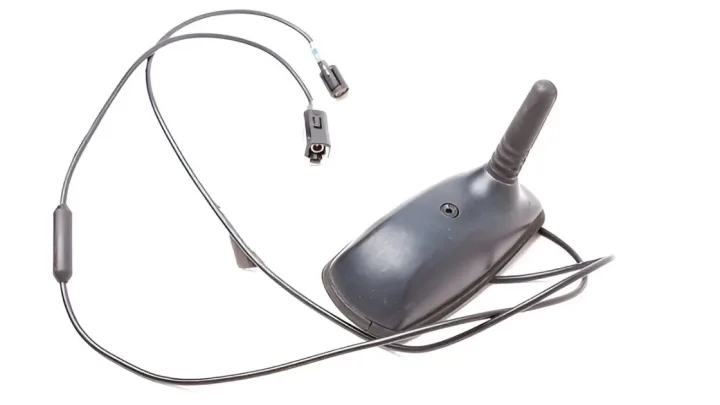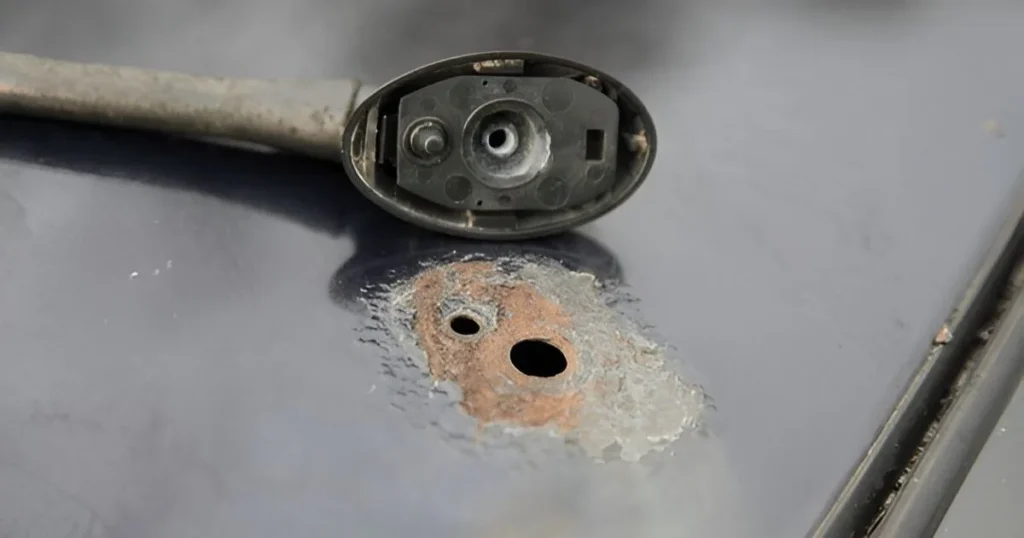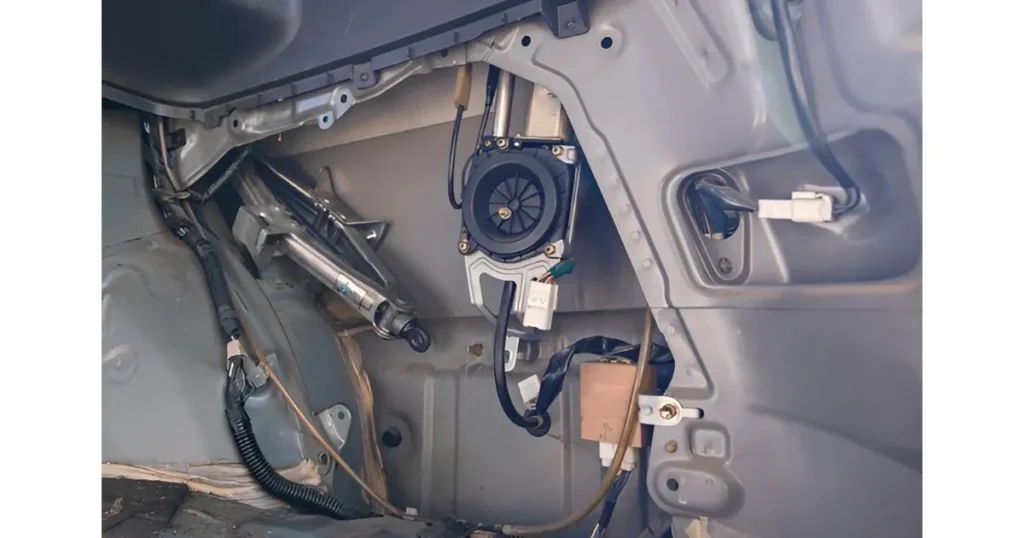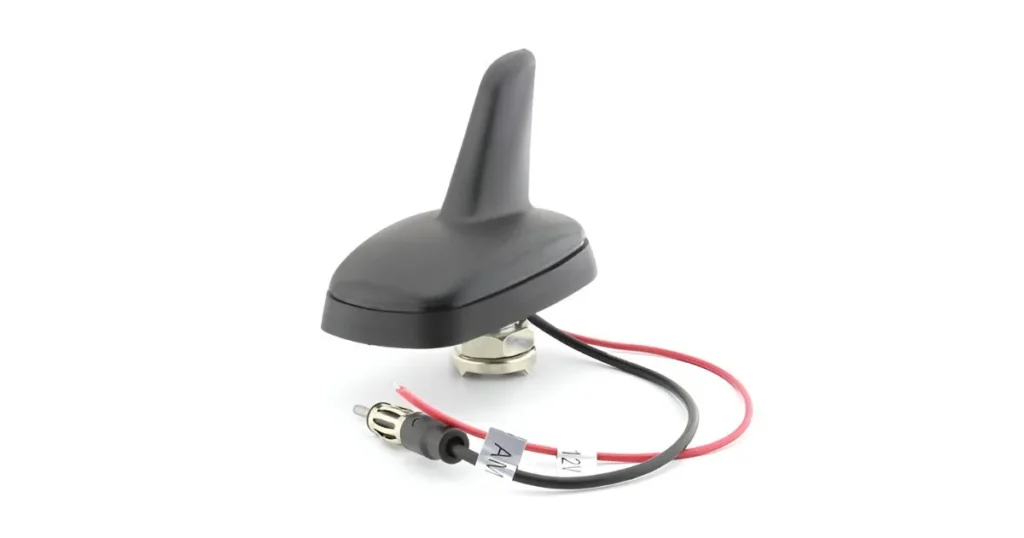
Car antenna assembly involves attaching the antenna to a vehicle to receive radio signals. It's crucial for optimal radio functionality in your car.
A car antenna is an essential component that ensures your vehicle's radio system maintains clear communication with external radio waves, allowing you to enjoy music, news, and other broadcasts without interference. Installing or replacing a car antenna requires careful attention to detail, as the process involves several steps that can vary depending on the type of antenna and vehicle.
From the traditional mast antenna to modern shark fin and satellite antennas, each type serves a specific purpose and requires a unique approach for assembly. Ensuring a proper connection and placement is key to achieving the best possible reception and enhancing your driving experience with uninterrupted access to your favorite radio stations. With advancements in technology, car antenna designs have evolved, becoming more efficient and less obtrusive, seamlessly integrating into the aesthetic of modern vehicles.
Types Of Car Antenna Assembly
Every car has an antenna, a crucial component for catching radio waves, but not all antennas are the same. A car antenna's job is to snag radio signals, ensuring you enjoy music, news, and weather updates on the go. The type of antenna on a car can affect reception, with some owners asking, "why is my car radio not picking up stations?" or complaining about poor AM radio reception in car. Understanding the different types can help in selecting the right one for your vehicle or troubleshooting issues.
External antennas are visible parts outside the car, often seen on the roof or fenders. They are the traditional type of antenna and come in various styles, each serving the same purpose: to catch radio waves for your car's audio system. Here's a breakdown of external car antenna parts and their functions:
- Whip Antennas: Tall and thin, these are common and easy to identify.
- Shark Fin Antennas: Compact and aerodynamic, they sit on the roof and are less prone to damage.
- Motorized Antennas: They extend when the radio is on and retract when off.
If you encounter how to install a car antenna, the process involves connecting the auto antenna parts and securing the unit to the vehicle. Installing an external antenna can be simple, but care is needed to ensure a secure fit and reliable connection. For a detailed guide on how to install car radio antenna, refer to your vehicle's manual or seek professional car aerial installation services.

External Car Antenna Assembly
Car antenna assemblies play a crucial role in ensuring a clear reception of radio signals. External antennas, mounted on the outside of vehicles, are vital for this function. They come in various shapes and sizes, each with unique features and installation processes. Let's explore two popular types: traditional whip antennas and shark fin antennas.
Traditional Whip Car Antenna Assembly
Traditional whip antennas stand tall on many vehicles, known for their simplicity and effectiveness. They capture radio waves from the air and feed them to the car's radio system. Here's a deeper look into whip antennas:
- Installation: Learning how to install a radio antenna starts with selecting the right model for your vehicle. The process to install a car radio antenna involves mounting it on a flat surface, usually on the car's body or roof.
- Functionality: A whip antenna works by picking up radio waves, which is essential for a good listening experience. The question "how does a car radio antenna work?" can be answered simply: it receives frequencies that the car radio converts into audio.
| Step | Process |
|---|---|
| 1 | Choose a suitable location |
| 2 | Secure the antenna base |
| 3 | Connect the radio lead |
| 4 | Test the reception |
Shark Fin Antennas
Shark fin antennas offer a modern twist to car aesthetics while maintaining function. These antennas sit flush with the vehicle's body, resembling a shark's fin. Below are insights into shark fin antennas:
- Design: Shark fin antennas boast a sleek design that blends with the car's shape. This feature reduces wind noise and drag, making them more aerodynamic than whip antennas.
- Performance: Concerning "how do car antennas work?", shark fin models combine GPS, cellular, and radio functionalities into one unit, which provides multiple services without cluttering the car's exterior.
| Advantage | Description |
|---|---|
| Aesthetics | Seamless integration with car design |
| Multi-function | Combines various signal receptions |
| Durability | Less prone to breakage due to compact size |
| Installation | Similar to whip antennas but often requires professional help due to integrated technology |
Internal Antennas
Car antennas let your radio catch signals. Some are outside, but others hide inside. Internal antennas are cool because they're not seen. They can be on windows or parts inside your car. They work well and keep your car looking sleek.
Glass-mount Car Antenna Assembly
Glass-mount antennas stick to your car's windows. They're inside but still catch radio waves. These antennas are great for a clean look. Here's why they rock:
- They're hidden: You can barely see them.
- No drilling: They stick on, so no holes in your car.
- Good signal: They still catch lots of radio stations.
But, they need a good spot. Not all windows work. The best place is often the rear window. Here's a quick look at their specs:
| Type | Placement | Signal Strength |
|---|---|---|
| Glass-Mount | Rear Window | High |
This table shows they're a top choice for clear sounds without messing up your car's look.
Patch Antennas
Patch antennas are small and flat. They stick inside your car, hidden from view. These antennas are super for not taking up space. They're often found in GPS systems because they're so good at catching signals. Here's what makes them special:
- Small size: They fit anywhere, keeping things tidy.
- Strong signal: They're good at catching even weak signals.
- Easy to install: You can put them in without much trouble.
They work best when placed correctly. High spots are best, like near the roof. This way, they catch more signals. Here's a quick guide:
| Type | Placement | Signal Strength |
|---|---|---|
| Patch | Near Roof | Very High |
This table tells us they're awesome for strong and clear signals, all while being out of sight.

Components Of A Car Antenna Assembly
The Car Antenna Assembly is a key part of your vehicle's radio system. It captures radio waves for your car's stereo to play music, news, and more. Let's explore its main parts and find out how does a car antenna work to give you the best sound on the go.
Car Antenna Assembly Mast
The Antenna Mast is the part you see outside the car. It's the tall, thin rod that catches radio signals. A good mast can mean how to get better car radio reception. Here's what you need to know about the mast:
- It's usually made of metal or fiberglass.
- Some are fixed, others can retract into the base when not in use.
- A damaged mast can weaken signal quality.
What is a car antenna for if not to catch signals? Well, the mast is the hero here. It grabs signals from the air and sends them down to your radio. Without it, you wouldn't hear much.
Base
The Base holds the antenna mast. It's fixed onto the car's body, and it's crucial for a steady signal. Below are some base facts:
- It's often plastic or metal.
- Inside, there's a motor for retractable masts.
- A good base keeps the mast upright, even at high speeds.
The base might seem simple, but it's vital. It supports the mast and connects to the cable inside. If the base is loose, your antenna might not work well.
Cable
The Cable is like a road from the antenna to your radio. It carries the signals the mast picks up. Here's what makes the cable important:
- It's shielded to protect signal quality.
- It must be the right length; too long can weaken the signal.
- It connects to the back of your car's radio system.
If you have issues with reception, checking the cable is smart. A damaged cable can ruin signal quality, making your favorite stations fuzzy.
Connector
Last is the Connector. It's a small part, but it plays a big role. It joins the cable to the radio. Here are the details:
- It must fit well to keep the signal strong.
- It's usually made of metal for the best connection.
- A loose connector can cause a lot of static.
A good connector ensures the signal from the mast travels through the cable to your radio without loss. It's the final piece in what are the antennas on cars for.

Installation Of A Car Antenna Assembly
Introduction to Car Antenna Assembly and Installation of a Car Antenna Assembly: A car antenna is key for radio signal reception. Its assembly includes picking a location, mounting, and connecting a cable. Proper installation ensures clear audio without static. Let's explore the steps to set up an antenna on your car.
Choosing The Right Location
Before you ponder over how to fix antenna on car, selecting an optimal spot is crucial. The right location affects signal strength and reception quality. Consider these points:
- Go for high and central spots on your vehicle to avoid signal obstruction.
- Ensure the location is away from metal obstructions inside the car.
- The base of the antenna should be on a flat surface for stable installation.
- Check for easy cable routing to the radio to avoid unnecessary cable extensions.
Remember, what is the antenna on a car for guides the location choice. It must capture signals well for your listening pleasure.
Mounting The Antenna
Once you nail the perfect spot, how to change antenna on car becomes your focus. Mounting the antenna correctly is vital for optimal performance. Follow these steps:
- Clear the chosen area of any dirt or debris.
- Align the antenna base with the mounting hole. Ensure it's straight.
- Secure the antenna using provided screws or adhesive pads if applicable.
- Test the mount by gently pulling to check its firmness.
For non-magnetic mounts, you may need to drill a hole. Seal it well to prevent leaks.
Connecting The Cable
With the antenna mounted, the final step is connecting the cable. This ensures signal transmission from the antenna to your car's radio. Here's what to do:
- Start by threading the cable from the antenna base to the radio unit.
- Use cable clips to secure the cable along the path to prevent damage.
- Connect the cable to the back of the radio. It should click into place.
- Turn on the radio to test the reception. Adjust if necessary.
Take care to route the cable away from sharp edges to prevent wear and tear.

Maintenance And Troubleshooting
The car antenna is a crucial component for clear radio reception and staying connected with the world while driving. Regular maintenance and troubleshooting of your car antenna assembly can ensure its longevity and functionality. Simple steps can help avoid common issues like poor reception or damage from the elements. Let’s explore how to keep your antenna in top shape and what to do if you encounter signal problems.
Cleaning The Car Antenna Assembly
Keeping your car antenna clean is essential for its performance. Dust, dirt, and grime can affect signal quality. Here’s how to clean your antenna properly:
- Turn off the car and ensure the antenna is retracted if it’s motorized.
- Gently wipe the antenna with a soft, damp cloth to remove loose dirt.
- Use a mild soap solution to clean tougher grime, avoiding harsh chemicals.
- Rinse the antenna with clean water and dry it with a soft cloth.
Regular cleaning prevents rust and corrosion, which can lead to the need for car antenna replacement. If the antenna is beyond cleaning and shows signs of wear, consider how to replace a car radio antenna or how to replace an antenna on a car. This process might involve selecting the right replacement antenna car model and carefully following instructions to ensure proper installation.
Checking For Signal Issues
Signal issues can be frustrating for any car owner. If you're experiencing poor reception, start by checking these areas:
- Inspect the antenna for physical damage, such as bends or breaks.
- Ensure the antenna base is firmly attached and there’s no corrosion.
- Test the radio in different locations to rule out environmental factors.
If the problem persists, you might need an auto radio antenna replacement. Learning how to replace car radio antenna or how to change car antenna can save time and money. For those wondering why do cars have antennas, it’s all about receiving radio waves clearly. To improve car stereo reception, consider an auto replacement antenna designed for better performance. Whether you choose to replace car antenna yourself or seek professional help, a functional antenna is key to enjoyable drives.
Audio & Video
How Much Does It Cost to Get Your Car Tuner: A Comprehensive Guide
How To Check If Car Antenna Cable Is Working
How to Install Media Player on a Car: Step-by-Step Guide
How to Install Radio on a Car: Easy Step-by-Step Guide
How Much Does Best Buy Charge to Install a Car Subwoofer? Find Out!
How Much Does It Cost to Fix Speakers in a Car: Expert Breakdown
How to Connect Mobile to Car Video Player: Easy Step-by-Step Guide
How Much Does It Cost To Replace Car Antenna Assembly
Conclusion
Wrapping up our journey through car antenna assembly, we've covered essential steps and tips. Remember, a properly installed antenna ensures clear reception and enhances your driving experience. For DIY enthusiasts and pros alike, mastering this skill is a smart move.
Stay tuned for more auto insights and happy motoring!
Disclosure
Some links may be affiliate links. That means we may earn a small commission at no extra cost to you.